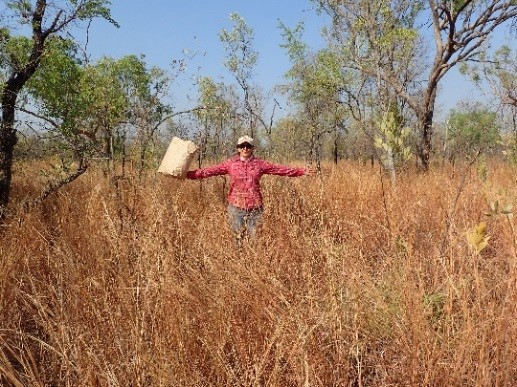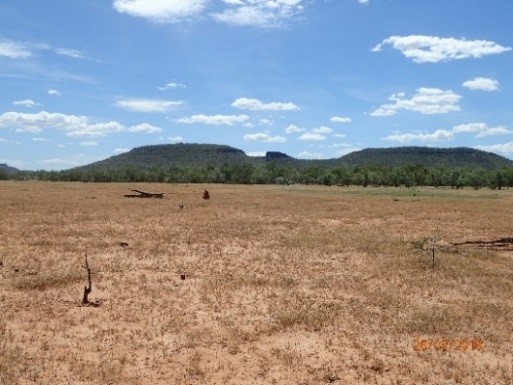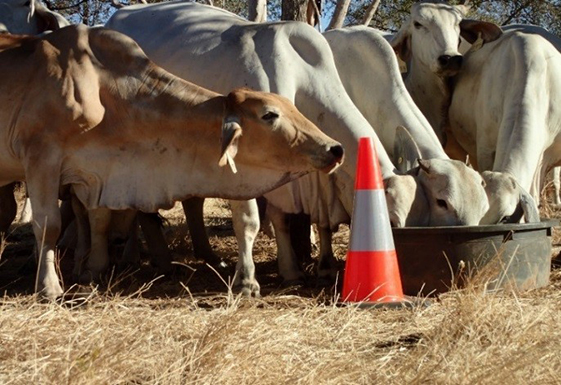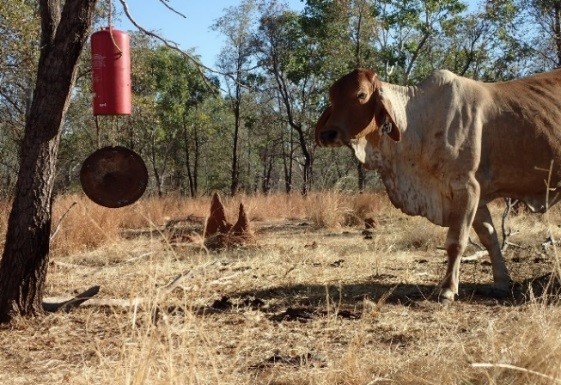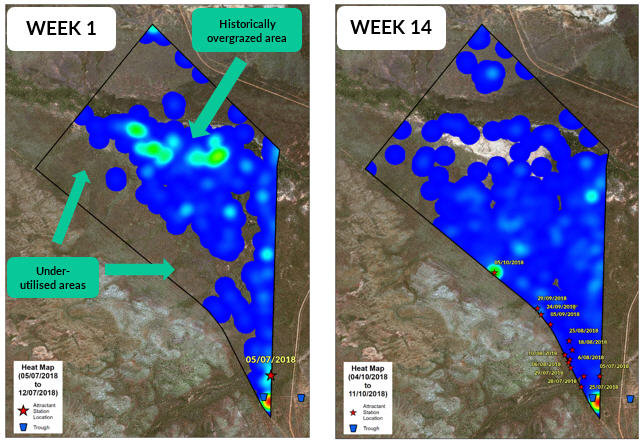Better paddock utilisation without more fences - can it be done?
Dionne Walsh, Rangeland Program Manager, DPIR Darwin
What is Self Herding?
Self Herding is a livestock management approach that uses positive reinforcement to influence grazing behavior. We are doing a trial at Kidman Springs to see whether Self Herding techniques can be used to create new grazing patterns within a paddock, thus creating a form of rotational grazing that does not rely on permanent fencing.
How are we testing the method in the Northern Territory?
We selected a paddock that has large contrasts in land condition created by historical grazing patterns.
Image above: We are testing whether we can attract cattle to use areas that have previously been under-utilised whilst reducing the usage of those areas that have poor land condition. Photos: Caz Pettit
What Self Herding tools are we using?
We are using feed attractants paired with signals to encourage cattle to make choices in response to positive behavioural and/or nutritional feedback. We use a mobile “attractant station” to achieve managed movements of cattle throughout the paddock. The frequency and distance that the attractant station is moved around the paddock is very flexible. During busy times, the attractant station can be left for several days before being moved. At other times, the property manager may wish to have more frequent interactions with the cattle to achieve specific management outcomes.
Image above: Our attractant station comprises four small feed tubs paired with a visual cue (witches hats placed near the tubs and on a nearby road or firebreak) and an audible cue (a wind chime placed in a tree near the attractant station). Photos: Dionne Walsh.
Each tub has a small amount of a supplementary feed added to it. Three of the tubs contain familiar feed items (e.g. urea, coarse salt, “Bruce’s Brew”, which is a mixture of locally-sourced wood ash and charcoal). The fourth tub is reserved for the intermittent placement of highly attractive energy-rich “jackpots” such as shipper pellets or molasses. The jackpots are paired with a unique sound cue, which in our case, is a whistle blown loudly at the time the jackpot is delivered. The whistle signal triggers a clear behavioural response with some animals moving with intent to obtain the reward when they hear the signal. The intermittent use of jackpots keeps the cattle highly motivated to return to the attractant station, on the off-chance that a particularly attractive food reward might be there.
Many producers already move lick around their paddocks, but this method amplifies that approach by offering a variety of attractants and using intermittent and unpredictable timing. This has the effect of increasing interest for a broader range of animals in a mob.
Early results
Data from GPS collars showed that in the first few weeks, the trial heifers demonstrated a very strong attraction to the historically overgrazed areas of the paddock. We think that they were responding to existing landscape cues such as old cattle pads, shorter patches of previously grazed pastures and freshly graded tracks. In response, the research team increased the frequency of the feed rewards at locations distant from the overgrazed areas. We have been able to demonstrate that the techniques have been able to draw cattle into areas that have traditionally not been used very much. We have also discovered very different day time and night time paddock usage patterns.
Figure 3: GPS collar “heat maps” show that Self Herding techniques have influenced grazing patterns in the trial paddock Images: Dionne Walsh.
At the conclusion of the trial in mid-2019, we will be reporting on:
- paddock and pasture utilisation patterns
- cattle productivity and behaviour
- costs of labour, vehicle and feed rewards
- an economic comparison to using fencing to achieve rotational grazing.
Want to know more about Self Herding?
Self Herding for the rangelands has been developed by Dr Dean Revell (Revell Science) and Bruce Maynard (Stress Free Stockmanship). More information can be found at Dean and Bruce’s website.
Acknowledgements: This project is a collaboration between Revell Science, Stress Free Stockmanship, Department of Primary Industry and Resources (Northern Territory), Rangelands Natural Resource Management (Western Australia), Territory Natural Resource Management and Oxley Grazing. Funding support has been provided by Meat and Livestock Australia.
Give feedback about this page.
Share this page:
URL copied!
